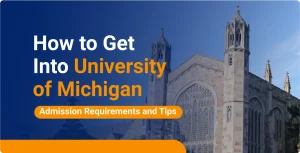Wondering if you can go to college for free? Here’s some awesome news: a lot of top colleges in the U.S. offer free tuition if you come from a low-income background! Yes, these schools might look expensive at first, but thanks to amazing financial aid programs, you could end up paying nothing. With the right help, you could have access to a world-class education without breaking the bank.
In this blog, we’ll show you 10 incredible colleges that offer free tuition to low-income students. We’ll also go over the GPA, test score requirements, and income limits you need to know about to qualify for financial aid. So, let’s dive in!
Top-Tier Colleges That Are Free for Low-Income Students
When considering schools that offer free or low-cost tuition for low-income students, it’s important to understand the difference between “sticker price” and “net price” first.
The sticker price is the full cost of tuition, fees, room, and board, while the net price is what you pay after financial aid is applied. At schools like Princeton, the net price can be much lower than the sticker price, even zero, especially for low-income students. This is key to understanding the true affordability of a college.
The idea that college should be free is gaining more support, and many schools are making it happen by providing opportunities for students from all economic backgrounds. These schools are proving that your financial situation shouldn’t limit your future:
1. Harvard University
- Location: Cambridge, Massachusetts
- Acceptance Rate: 3.6%
- Target GPA/Test Scores: 4.2+ GPA, 1500-1580 SAT, or 34-36 ACT
Harvard’s financial aid program is one of the most generous out there. They make sure talented students like you can attend without financial stress. In fact, 24% of families at Harvard—those who earn less than $85,000—pay absolutely nothing for their students to attend.
Even families earning between $85,000 and $150,000 often pay only a small percentage of their income, making a Harvard education more accessible than you might think.
If you’re concerned about the cost of college, don’t be. Harvard’s need-blind admissions process means applying for financial aid won’t affect your chances of getting in. Once you’re admitted, Harvard’s financial aid officers will work closely with your family to create a personalized package that covers the full cost of attendance. No loans, no stress, just support to help you succeed.
2. Stanford University
- Location: Stanford, California
- Acceptance Rate: 3.9%
- Target GPA/Test Scores: 3.9+ GPA, 1500+ SAT or 34+ ACT
Stanford’s financial aid program makes higher education accessible by covering the majority of costs for students from families with an income of $150,000 or less. If your family earns under $100,000, you won’t have to pay for tuition, room, or board. Nearly half of Stanford undergraduates benefit from need-based financial aid, and the average scholarship for the Class of 2027 was over $70,000.
The financial aid process at Stanford is designed to work with your family’s unique situation. It helps bridge the gap between what your family can contribute and the full cost of attending, ensuring that your financial background doesn’t stand in the way of your education.
You’ll receive aid through scholarships, grants, and work-study opportunities, which don’t need to be repaid, allowing you to focus more on your studies and less on paying back loans.
3. Princeton University
- Location: Princeton, New Jersey
- Acceptance Rate: 4.6%
- Target GPA/Test Scores: 3.94+ GPA, 1560+ SAT or 35+ ACT
Princeton University is committed to making college affordable with one of the most generous financial aid programs in the country. Its need-blind admissions policy ensures that financial need does not impact your chances of acceptance.
Once admitted, Princeton meets 100% of demonstrated financial need through grants, so students don’t have to rely on loans to cover tuition or living expenses. Families earning less than $100,000 annually pay nothing for tuition, housing, or food, and Princeton replaces loans with grants to minimize debt.
Additionally, Princeton does not require work-study, allowing you to focus entirely on academics. For international students, Princeton provides the same financial aid package. This makes Princeton a more attainable option than its sticker price might suggest.
4. Yale University
- Location: New Haven, Connecticut
- Acceptance Rate: 3.7%
- Target GPA/Test Scores: 4.1+ GPA, 1560+ SAT or 35+ ACT
When it comes to financial aid, Yale University makes sure that money won’t get in the way of your dreams. Their need-blind admissions and need-based financial aid policy mean they won’t consider your ability to pay when reviewing your application. Once you’re in, Yale covers 100% of your demonstrated need with a mix of scholarships and small family contributions with no loans required.
If your family makes less than $75,000 a year, you won’t need to contribute anything toward your tuition. For families making between $75,000 and $200,000, the contribution is based on a sliding scale, so it’s more manageable. Even families earning over $200,000 might still get some financial aid, depending on their situation.
5. Duke University
- Location: Durham, North Carolina
- Acceptance Rate: 6.3%
- Target GPA/Test Scores: 3.94+ GPA, 1450+ SAT or 33+ ACT
Duke is making it even easier for students from North and South Carolina to attend by offering full tuition for families earning less than $150,000. For those whose family incomes are $65,000 or less, Duke will cover not just tuition but also housing, meals, and other expenses without any student loans involved. How cool is that?
But it doesn’t stop there. Duke is all about making sure that their students thrive both in and out of the classroom. The school’s commitment to accessibility is stronger than ever, with more than $130 million in annual financial aid grants.
So, if you’re a North or South Carolina resident or a first-generation college student, Duke is making sure you have all the resources you need to succeed. And they even have merit scholarships for students from the Carolinas, like the Trinity Scholarships and the Benjamin N. Duke Memorial Scholars program, to help ease the financial burden.
6. Columbia University
- Location: New York, New York
- Acceptance Rate: 3.85%
- Target GPA/Test Scores: 3.9+ GPA, 1500+ SAT or 34+ ACT
Columbia not only makes sure that high-achieving students are supported but also makes it incredibly affordable for those from low-income backgrounds. If your family makes less than $150,000 a year, you’re looking at a tuition-free ride.
That’s right—no tuition to pay, so you can focus on your studies and life in New York City without the heavy financial burden that comes with private colleges. For students from even lower-income families, Columbia will make sure that your full cost of attendance is covered, including housing and meals.
Columbia doesn’t use loans to meet your financial needs, and loans won’t be included in your financial aid package. In fact, half of the students who come through the door get financial aid, with an average of over $76,000 awarded.
With generous start-up grants and a solid support system in place, Columbia is committed to making sure you can thrive without worrying about money.
7. MIT (Massachusetts Institute of Technology)
- Location: Cambridge, Massachusetts
- Acceptance Rate: 4.5%
- Target GPA/Test Scores: 4.2+ GPA, 1520+ SAT or 35+ ACT
When it comes to affordability, MIT goes all out to make sure that cost isn’t a barrier for talented students like you. In fact, MIT is one of only nine schools in the U.S. that is need-blind and need-based, meaning they don’t even factor in your family’s financial situation when making admissions decisions.
Once you’re admitted, MIT is fully committed to meeting 100% of your demonstrated financial need for all four years, no matter where you’re from, domestic or international. So, you don’t have to stress about tuition if you’re a strong candidate.
Here’s the really exciting part. MIT is introducing some major financial aid enhancements starting in 2025. For families with an income under $100,000, parents won’t be expected to contribute anything toward your education. You’ll still need to chip in with some of your own savings or through student work, but that’s a pretty awesome perk.
On top of that, if your family makes under $200,000, you’ll get to attend MIT tuition-free! That means you won’t have to worry about the cost of tuition; your grant and scholarship aid will cover it all.
8. University of Chicago (UChicago)
- Location: Chicago, Illinois
- Acceptance Rate: 5%
- Target GPA/Test Scores: 4.32+ GPA, 1510+ SAT or 34+ ACT
UChicago is all about making sure you can focus on what matters most to your education without the stress of financial worries. With their No Barriers plan, they’ve made it easier than ever for students to access a top-tier education. Families making less than $125,000 annually get a financial aid package that covers full tuition, while those making under $60,000 have their tuition, fees, and room and board completely covered.
And get this, their financial aid doesn’t include loans! Everything is given as grants, meaning it’s all money you don’t have to pay back.
UChicago is also deeply committed to giving you opportunities to grow, both academically and professionally. With their funded internships, research positions, and study abroad programs, you can dive into experiences that complement your studies. Plus, you’ll get career support from day one with a personal career advisor and access to 2,800+ funded internships every year.
9. Rice University
- Location: Houston, Texas
- Acceptance Rate: 7.7%
- Target GPA/Test Scores: 4.12 GPA, 1500 SAT or 34 ACT
Rice University is making college way more affordable. Through The Rice Investment, they offer free tuition for families earning under $130,000, and if your family makes under $65,000, you get free room and board too.
What’s even cooler is that Rice’s financial aid covers more than just tuition. If your family makes between $140,000 and $200,000, you can still get at least half-tuition, and they even offer free coverage for tuition, fees, and living expenses for families making less than $75,000. Plus, you won’t have to worry about student loans because Rice is committed to keeping things loan-free.
10. Brown University
- Location: Providence, Rhode Island
- Acceptance Rate: 5.2%
- Target GPA/Test Scores: 3.9 GPA, SAT 1510-1560 or ACT 34-35
With their generous financial aid, Brown University meets 100% of your demonstrated needs. And if your family makes under $60,000, they’ll cover everything from tuition to room and board. That means you can get a world-class education without worrying about tuition bills.
Brown is also need-blind for U.S. students, so your financial situation won’t impact your chances of admission. They’re committed to making college accessible for everyone, no matter your background, so you can focus on what matters most: your future and your education.
Frequently Asked Questions
1. Can I go to college for free?
Yes, you can! Many colleges offer free tuition for students from low-income families. Some even cover things like room and board. These schools have specific eligibility requirements, like a certain family income level, and sometimes they ask you to work on campus or participate in community activities. So, the answer is yes, there are real opportunities for you to attend college for free.
2. Are there additional costs at colleges offering free tuition?
While tuition might be covered, you’ll need to check if there are other costs like housing, textbooks, or health insurance. For example, some schools that offer free tuition might still charge for things like dorms or meals, though they may offer financial aid to help with these expenses. Always review the details of the financial aid package to know exactly what’s covered.
3. What are the benefits of attending a free tuition college?
Attending a free tuition college means you can focus on your studies and career goals without stressing about student loans. You can graduate with less debt, which means you’re in a better financial position post-graduation. Plus, these schools often offer extra support like mentorship, career counseling, and academic advice to ensure you succeed.
4. What should I consider when applying to colleges offering free tuition?
It’s important to research the specific eligibility requirements for each school. Some colleges offer free tuition based on your family’s income, while others may have specific academic criteria or require you to participate in work-study programs. Make sure you understand all the details so you’re prepared for the application process.
Takeaways
- You don’t have to let finances stop you from going to college! There are plenty of top schools that offer free tuition for low-income students.
- Schools like Harvard, Stanford, and Princeton have financial aid programs that, depending on your family’s income, cover tuition, room, and board.
- Some universities, like MIT and Duke, make sure you’re not burdened with student loans, offering financial aid packages that don’t require repayment.
- These schools are not only offering free tuition but also providing opportunities for work-study, internships, and research positions to help you thrive.
- Looking for guidance? AdmissionSight’s private consulting program can help you choose the right college that offers free tuition and navigate the application process with confidence.




































